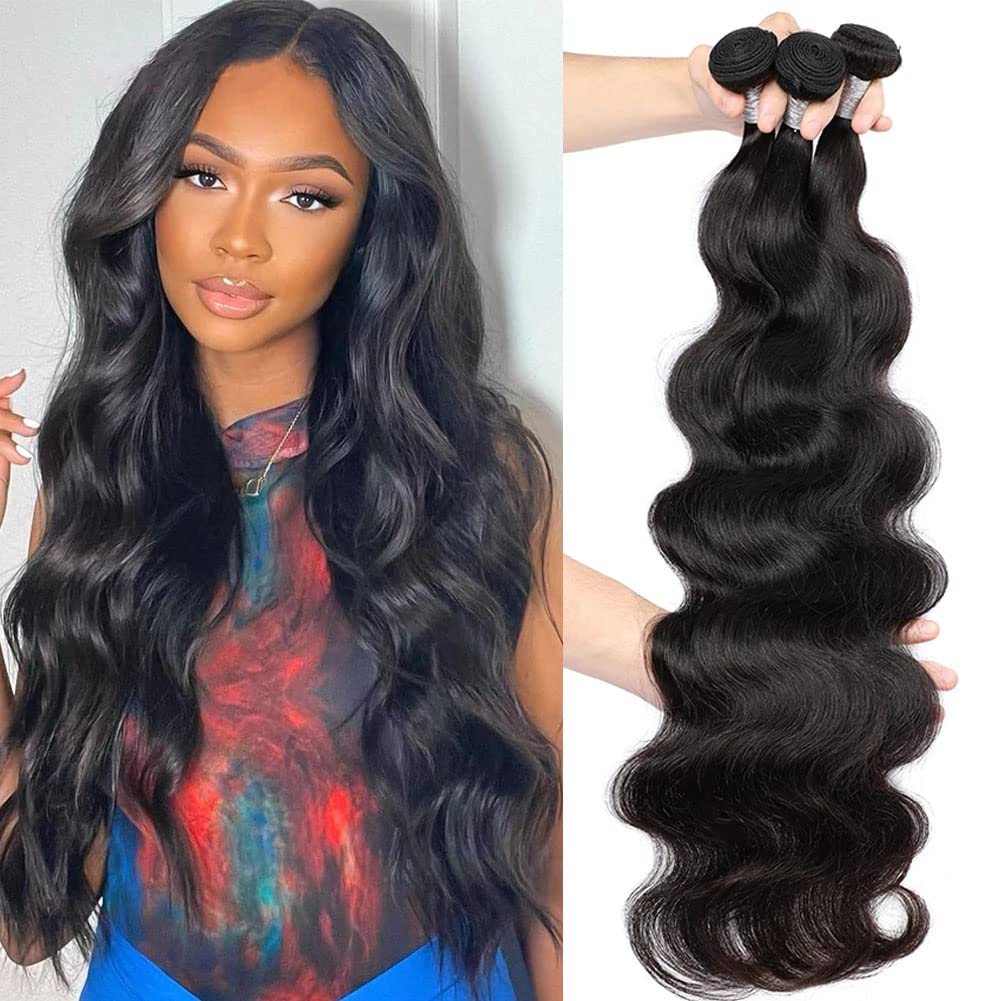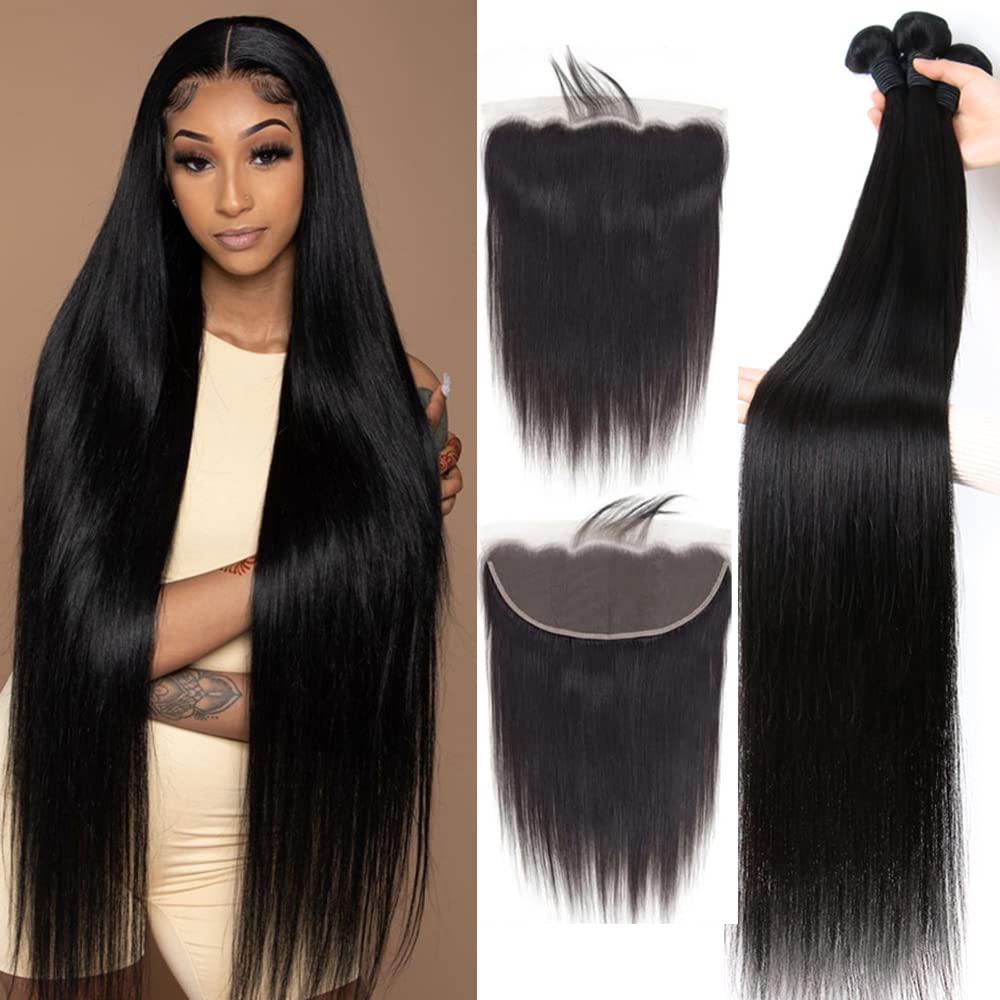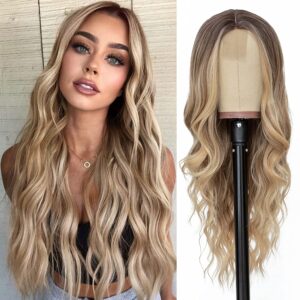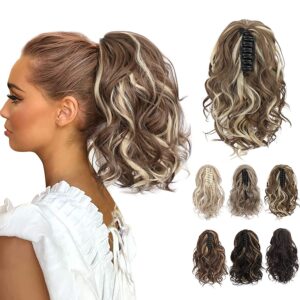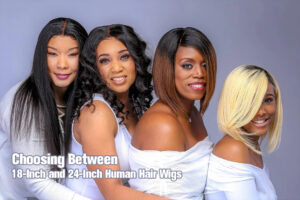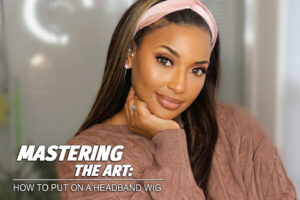While wigs offer a convenient and stylish solution for hair-related preferences, maintaining their quality is paramount to ensuring a satisfactory and prolonged experience for the wearer. The longevity and overall appearance of a wig are directly linked to the level of care and attention it receives. Whether synthetic or made from human hair, a well-maintained wig not only looks more natural but also feels comfortable, boosting the wearer’s confidence and satisfaction.
Despite their popularity, wigs are not immune to wear and tear. Common concerns about wig damage often revolve around factors that can compromise their integrity and aesthetics. Issues such as frizz, tangling, color fading, and the overall deterioration of wig fibers can arise from various sources, including environmental conditions, styling practices, and the quality of products used in maintenance. Understanding and addressing these concerns is crucial for individuals seeking to maximize the lifespan and appearance of their wigs. In this guide, we will delve into the types of wigs available, environmental factors affecting them, proper styling and cleaning practices, storage tips, and the significance of investing in high-quality products for a comprehensive approach to wig care and maintenance.
Types of Wigs
Synthetic wigs
Synthetic wigs stand out as a popular and affordable option for those seeking a quick transformation of their hairstyle. Crafted from synthetic fibers like acrylic, nylon, or polyester, these wigs offer a diverse range of styles, colors, and textures, providing wearers with numerous options for self-expression. Their affordability makes them accessible to a wide audience, and their low-maintenance requirements make them particularly appealing to individuals with busy lifestyles or those new to wig wearing.
Characteristics and Benefits One of the primary advantages of synthetic wigs lies in their affordability and versatility. Compared to their human hair counterparts, synthetic wigs are more budget-friendly, allowing a broader audience to enjoy the benefits of wig styling. Additionally, these wigs come in an array of styles, colors, and textures, offering wearers the flexibility to experiment with different looks. Their low-maintenance nature further enhances their appeal, as synthetic wigs retain their style even after washing, requiring minimal effort for upkeep.
Vulnerabilities to Damage However, despite their advantages, synthetic wigs are not without vulnerabilities. Their sensitivity to heat and friction poses a significant risk to their longevity. Exposure to high temperatures, whether from styling tools or environmental factors, can result in irreparable damage, including melting or frizzing. Furthermore, the limited styling options of synthetic wigs mean that attempting to restyle or apply heat for customization can compromise the overall appearance of the wig. Vigilant care and an understanding of these vulnerabilities are crucial for preserving the quality and lifespan of synthetic wigs.

Human Hair Wigs
Human hair wigs are renowned for offering a natural and lifelike appearance, closely resembling the texture and movement of natural hair. Despite their premium qualities, it is imperative to comprehend both the advantages and drawbacks associated with human hair wigs, along with the factors that can contribute to damage. This understanding is crucial for those aiming to maximize the lifespan of their human hair wigs and maintain them in pristine condition.
Advantages and Drawbacks The standout feature of human hair wigs lies in their ability to provide the most authentic and natural look, complete with realistic movement and texture. This authenticity extends to styling options, as human hair wigs can be treated like natural hair and are compatible with heat styling tools. While this versatility in styling is an advantage, it comes with higher maintenance needs compared to synthetic wigs. Regular washing, conditioning, and styling are essential to ensure that human hair wigs retain their best possible appearance.
Factors Contributing to Damage Despite their premium quality, human hair wigs are not immune to potential damage. The impact of styling tools and products poses a significant risk, emphasizing the importance of following recommended guidelines for temperature settings and choosing products specifically designed for human hair. Additionally, human hair wigs have special care requirements dependent on weather conditions. High humidity can lead to frizz, while low humidity may result in dryness and brittleness. Adapting to these specific care needs is crucial to preserving the quality and longevity of human hair wigs.
Environmental Factors
Sunlight Exposure
UV Rays and Their Impact
1) Fading of Color and Texture
Prolonged exposure to ultraviolet (UV) rays from sunlight can lead to the fading of colors in both synthetic and human hair wigs. This is particularly noticeable in brightly colored or dyed wigs. Additionally, UV rays can affect the texture of the wig fibers, making them brittle and more prone to breakage.
2) Weakening of Fibers
UV rays can contribute to the degradation of the molecular structure of wig fibers, weakening them over time. This weakening may result in increased vulnerability to damage from environmental elements and styling practices.

Protective Measures
1) Using UV-Protective Sprays or Covers
Applying UV-protective sprays specifically designed for wigs can create a barrier that helps shield the wig from the harmful effects of UV rays. Alternatively, storing wigs in a cool, dark place or using wig covers when outdoors can offer additional protection.
2) Storing Wigs in Shaded Areas
When not in use, storing wigs in shaded areas away from direct sunlight can prevent unnecessary exposure. This practice is especially important for preserving the color vibrancy and overall quality of synthetic and human hair wigs.
Humidity and Temperature
Effects on Wig Fibers
1) Frizz and Tangling in High Humidity
Synthetic and human hair wigs are susceptible to frizz and tangling when exposed to high humidity. The moisture in the air can cause the fibers to swell and become more prone to entanglement, affecting the overall appearance of the wig.
2) Drying and Brittleness in Low Humidity
Conversely, low humidity can lead to dryness and brittleness in wig fibers, making them more susceptible to breakage. Proper hydration is essential to maintaining the flexibility and integrity of both synthetic and human hair wigs.
Storage Recommendations
1) Climate-Controlled Storage Options
Storing wigs in a climate-controlled environment helps regulate temperature and humidity levels, minimizing the impact of environmental fluctuations. This is particularly important for individuals living in regions with extreme weather conditions.
2) Using Moisture-Absorbing Packs
Placing moisture-absorbing packs, such as silica gel packets, in the storage area can help control excess humidity and protect the wig from potential damage. These packs are especially useful in preventing mold growth in humid environments.
By understanding the effects of sunlight exposure, UV rays, humidity, and temperature on wig fibers, individuals can implement protective measures and storage recommendations to mitigate potential damage and ensure the longevity of their wigs. These considerations contribute to a comprehensive approach to wig care in various environmental conditions.
Styling Practices
Heat Styling
Safe Temperature Ranges
1) Avoiding Excessive Heat Exposure
Excessive heat exposure can cause irreparable damage to both synthetic and human hair wigs. It is crucial to adhere to safe temperature ranges when using styling tools such as flat irons, curling irons, or blow dryers. Consult the manufacturer’s guidelines for recommended temperatures based on the wig’s material.
2) Testing Temperature on a Small Section
Before styling the entire wig, test the chosen heat setting on a small, inconspicuous section. This precautionary measure helps ensure that the selected temperature does not lead to overheating or damage, especially in the case of synthetic wigs.

Heat Protectants and Their Importance
1) Choosing the Right Heat Protectant Products
Heat protectant sprays or serums act as a barrier between the wig fibers and styling tools. When using heat styling tools, apply a suitable heat protectant to minimize the risk of heat damage. Select products specifically formulated for synthetic or human hair wigs based on their unique needs.
2) Applying Protectants Before Styling
Prior to heat styling, evenly distribute the chosen heat protectant throughout the wig. Pay special attention to the ends and areas that may be more prone to damage. This step helps create a protective shield, reducing the impact of heat on the wig fibers.
Brushing and Combing
Choosing the Right Tools
1) Wide-Toothed Combs for Detangling
Start the detangling process with a wide-toothed comb, especially for wigs with tight curls or textured styles. This helps minimize breakage and prevents unnecessary stress on the wig fibers. Begin at the tips and gradually work your way toward the roots.
2) Soft-Bristle Brushes for Styling
When styling, use a soft-bristle brush suitable for the wig’s texture. Brushes with gentle bristles help maintain the wig’s appearance without causing excessive friction or damage. Avoid harsh brushes that may lead to tangling or breakage.
Gentle Detangling Techniques
1) Starting from the Tips and Working Upward
Begin the detangling process at the tips of the wig, gradually working your way upward. This approach prevents the accumulation of knots and minimizes stress on the fibers. Patiently detangle small sections to avoid causing damage.
2) Avoiding Aggressive Pulling and Tugging
Vigorous pulling and tugging during the detangling process can lead to breakage and damage the wig. Exercise patience and use a gentle touch, especially when dealing with knots or tangles. Applying a detangling spray or conditioner can also aid in the process.
By adhering to safe temperature ranges, using heat protectants, selecting appropriate styling tools, and practicing gentle detangling techniques, individuals can ensure that their wigs remain stylish and undamaged. These considerations contribute to a comprehensive approach to wig styling practices, promoting the longevity and overall quality of both synthetic and human hair wigs.
Washing and Cleaning
Frequency of Washing
Overwashing Risks
1) Stripping Natural Oils
Overwashing, whether with synthetic or human hair wigs, can strip the wig of its natural oils. These oils contribute to the wig’s shine, smoothness, and overall health. Frequent washing may lead to dryness, making the wig more susceptible to damage.
2) Accelerating Wear and Tear
Each wash involves some level of manipulation and friction, contributing to wear and tear. Overwashing can accelerate this process, leading to a reduction in the wig’s lifespan and overall quality.

Signs of a Dirty Wig
1) Dullness and Lack of Luster
A dirty wig may appear dull and lack the luster it had when freshly cleaned. This is often due to the accumulation of product residues, environmental pollutants, and natural oils.
2) Unpleasant Odors
Over time, a wig that hasn’t been washed regularly may develop unpleasant odors. This can be particularly noticeable in synthetic wigs, as they don’t benefit from the natural oils that human hair wigs have.
Proper Washing Techniques
Suitable Products
1) Mild Shampoos and Conditioners
Selecting mild shampoos and conditioners designed for wigs is crucial. Avoid products containing harsh chemicals or sulfates that can strip the wig’s fibers. Choose products that are suitable for the specific material of the wig, whether synthetic or human hair.
2) Avoiding Harsh Chemicals
Harsh chemicals, such as bleach or strong dyes, should be avoided during the washing process. These substances can cause irreversible damage to both synthetic and human hair wigs.
Drying Methods
1) Air-Drying Versus Using Heat
Whenever possible, opt for air-drying instead of using heat to dry the wig. Excessive heat can contribute to damage, especially in the case of synthetic wigs. If using a blow dryer, ensure it is set to a low heat setting.
2) Patting Dry Instead of Vigorous Rubbing
After washing, pat the wig dry with a clean, soft towel instead of vigorously rubbing it. Rubbing can lead to friction and tangling, which may result in damage to the wig fibers.
By understanding the risks of overwashing, recognizing signs of a dirty wig, and implementing proper washing techniques with suitable products, individuals can maintain the cleanliness and integrity of their wigs. These considerations contribute to an effective and responsible approach to washing and cleaning, promoting the longevity and overall quality of both synthetic and human hair wigs.
Storage Tips
Choosing the Right Storage Space
Avoiding Direct Sunlight and Heat
1) Impact of Prolonged Exposure
Direct sunlight and prolonged exposure to heat can have detrimental effects on both synthetic and human hair wigs. UV rays from sunlight may lead to color fading, while excessive heat can cause fibers to weaken and lose their structural integrity.
2) Optimal Storage Locations
Choose a storage space away from windows and areas prone to heat sources, such as radiators or heating vents. This ensures that the wig remains protected from unnecessary exposure to sunlight and high temperatures.

Ventilation Considerations
1) Allowing Air Circulation to Prevent Mold
Proper ventilation is crucial for preventing the growth of mold, especially in humid environments. Ensure that the storage area has adequate air circulation to maintain a dry and mold-free environment for the wig.
2) Using Breathable Storage Bags
If storing wigs in bags, opt for breathable materials to allow air circulation. This helps prevent the accumulation of moisture within the storage space, reducing the risk of mold or mildew.
Using Wig Stands and Mannequins
Benefits for Maintaining Shape
1) Preventing Creases and Deformities
Storing wigs on wig stands or mannequins helps maintain their intended shape. Avoiding folds and creases is essential for preserving the wig’s appearance and preventing deformities that can be challenging to rectify.
2) Facilitating Easy Styling
Wig stands provide a convenient platform for styling and organizing wigs. They allow for easy access during the styling process and help keep the wig in optimal condition for wear.
Preventing Tangles
1) Hanging Wigs to Avoid Friction
Hanging wigs on wig stands or mannequins reduces the likelihood of friction and tangling. This practice is particularly important for longer wigs, as it prevents contact with surfaces that may cause knots and tangles.
2) Securing Loose Hair to Prevent Knots
Prior to storing the wig, secure any loose hair with gentle ties or clips. This precautionary measure helps prevent knots and tangles, ensuring that the wig remains in good condition and ready for use.
By choosing the right storage space, avoiding direct sunlight and heat, considering ventilation needs, and utilizing wig stands or mannequins for optimal shape maintenance, individuals can significantly contribute to the longevity and overall quality of both synthetic and human hair wigs. These storage tips form an integral part of responsible wig ownership and care.
Quality of Products
Investing in High-Quality Wigs
Differences Between Cheap and Quality Wigs
1) Durability and Longevity Considerations
High-quality wigs are crafted with durable materials, ensuring a longer lifespan compared to cheaper alternatives. Cheap wigs may show signs of wear and tear more quickly, leading to a shorter overall usage period.
2) Realistic Appearance and Feel
Quality wigs often boast a more realistic appearance and natural feel. The materials used in their construction closely mimic the texture and movement of natural hair, providing a more authentic look that enhances the wearer’s confidence.
3) Construction and Cap Design
Cheaper wigs may feature less sophisticated cap construction, leading to discomfort and a less secure fit. High-quality wigs often incorporate advanced cap designs, ensuring comfort, breathability, and a secure fit that conforms to the wearer’s head shape.
4) Styling Versatility
Quality wigs offer greater styling versatility, allowing for the use of heat styling tools and various hair accessories. Cheaper wigs may have limitations in terms of styling options and may not withstand heat styling without damage.
5) Resistance to Tangling and Matting
Higher-quality wigs are less prone to tangling and matting, ensuring a smoother and more manageable wearing experience. Cheaper wigs, due to the use of inferior materials, may tangle more easily, requiring frequent detangling and maintenance.

Long-Term Cost-Effectiveness
1) Saving on Frequent Replacements
While the upfront cost of a high-quality wig may be higher, the long-term cost-effectiveness is notable. Quality wigs require less frequent replacement due to their durability and resistance to wear and tear. This can result in significant savings over time.
2) Enhanced Overall Satisfaction
Investing in a high-quality wig often translates to a more satisfying and enjoyable experience for the wearer. The realistic appearance, comfort, and longevity contribute to overall satisfaction, making the initial investment worthwhile.
3) Avoiding Additional Maintenance Costs
Cheaper wigs may require more frequent maintenance, such as detangling, repairing, or replacing. High-quality wigs, with proper care, are less likely to incur additional maintenance costs, further contributing to their long-term cost-effectiveness.
In conclusion, investing in high-quality wigs offers numerous advantages, including increased durability, a realistic appearance, and long-term cost-effectiveness. While cheaper wigs may seem attractive initially due to their lower price point, the benefits of high-quality wigs in terms of appearance, comfort, and longevity make them a superior choice for individuals seeking a satisfying and enduring wig-wearing experience.
Regular Maintenance
Inspection and Repair
Identifying Early Signs of Damage
1) Thinning Areas and Bald Spots
Regularly inspect the wig for thinning areas or bald spots, especially in high-friction areas like the nape or crown. Early identification of such signs allows for timely intervention to prevent further damage.
2) Loose or Damaged Wefts
Check the wig’s wefts for any signs of loosening or damage. Loose wefts can lead to hair shedding and affect the overall integrity of the wig. Identifying and addressing this issue promptly helps maintain the wig’s structure.
3) Changes in Texture or Color
Monitor the wig for any unexpected changes in texture or color. These changes could indicate exposure to environmental factors, such as sunlight or humidity, and addressing them early can prevent further deterioration.

Professional Maintenance Options
1) Seeking Professional Wig Care Services
Consider taking the wig to a professional wig stylist or salon for routine maintenance. Professionals have the expertise to assess the wig’s condition, perform repairs, and provide recommendations for optimal care.
2) DIY Repairs with Proper Guidance
For individuals comfortable with DIY approaches, some minor repairs can be done at home with proper guidance. Resources such as online tutorials or wig care guides can provide step-by-step instructions for common repairs, such as securing loose wefts or reattaching strands.
3) Regularly Scheduled Maintenance Appointments
Establishing a regular schedule for professional maintenance appointments ensures that the wig receives consistent care. These appointments may include services such as washing, conditioning, and styling, in addition to addressing any identified issues.
Regular maintenance, including inspection and repair, is essential for prolonging the lifespan and maintaining the quality of both synthetic and human hair wigs. By identifying early signs of damage and exploring professional maintenance options, individuals can actively contribute to the ongoing care and preservation of their wigs, ensuring a positive and long-lasting wig-wearing experience.
Conclusion
Throughout this comprehensive guide, we have explored various factors that contribute to wig damage. These include environmental elements such as sunlight exposure, humidity, and temperature fluctuations. Styling practices, including heat styling and brushing techniques, can impact the integrity of wig fibers. Washing and cleaning, when not done with care, may lead to overwashing risks and signs of a dirty wig. Storage practices, if not chosen wisely, can expose wigs to detrimental conditions. Lastly, the quality of products, especially the choice between cheap and high-quality wigs, plays a pivotal role in determining the overall lifespan and appearance of wigs.
Maintaining the quality and longevity of wigs requires a proactive approach to maintenance. Regular inspection for early signs of damage, proper washing techniques, careful styling practices, and thoughtful storage considerations are all integral components of responsible wig ownership. By taking a proactive stance, individuals can address potential issues before they escalate, preserving the aesthetics and structural integrity of their wigs over time.
In conclusion, responsible wig ownership involves understanding the unique needs of both synthetic and human hair wigs and implementing best practices for care and maintenance. Choosing high-quality wigs, being mindful of environmental factors, utilizing proper styling techniques, and investing time in regular inspections all contribute to prolonging the lifespan of wigs. By following the guidelines outlined in this guide, individuals can not only enjoy the versatility and convenience that wigs offer but also ensure a satisfying and prolonged wig-wearing experience. Responsible wig ownership is key to unlocking the full potential of wigs and maintaining their quality for the long term.


